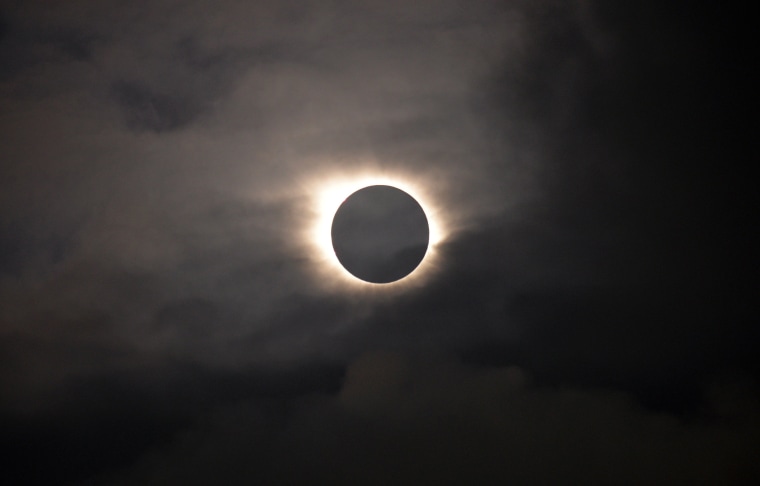On August 21 of this year, people living in the United States will be treated to a total solar eclipse the likes of which hasn’t been seen here in almost a century. It will be a dramatic, multisensory experience. As the moon passes in front of the sun, the noon sky will go dark and the stars will come out. Temperatures will fall. Birds will grow silent in the sudden twilight, while crickets will awaken.
I have been waiting 38 years for this day to arrive.
On average, a total solar eclipse is visible from somewhere on Earth about once a year. The last total solar eclipse to touch the continental U.S. was on February 26, 1979, when half the current U.S. population wasn’t yet born. That eclipse touched only a tiny portion of the Pacific Northwest, but it happened to go right over my house in Portland, Oregon. Today I may be a professional astronomer, but back then I was a 9-year-old kid who had just fallen in love with NASA and space exploration. I learned about the eclipse in my fourth-grade class.
Unfortunately, mostly what I learned about it was to be afraid.
Every time adults spoke of that eclipse, they expressed fears that someone would look directly at it and suffer eye damage. The talk was so scary I figured the sun would emit some strange eye-burning rays during the moments of totality (when the sun is entirely blocked by the moon) — and that if I looked up I would become permanently blind. The administrators at my school were so worried students might go blind on school property that they canceled classes.
(Don’t get me wrong: eclipse or not, staring at the sun is dangerous. During any part of the eclipse when the sun is visible you need to use eye protection, but unlike the protective gear needed for many sports, eclipse protection costs only a dollar. All you need are the cardboard “glasses” that have a special filter to block the sun’s harmful visible, ultraviolet, and infrared light. Come eclipse time, they'll be available almost everywhere and you can order them off the internet right now. Just make sure they are “CE” certified and meet all ISO standards.)
Related: Why Scientists Are So Excited About This Solar Eclipse
As a result of all this worry on the part of the adults around me, I never got to witness that eclipse. Instead of going outside, I stayed inside, with curtains drawn, and watched coverage of the eclipse on TV. My only direct experience of the awesome event that was unfolding overhead was seeing how dark the house suddenly got at the moment of celestial alignment.
I had been robbed of a life-changing experience.
"I have been waiting 38 years for this day to arrive."
Today, almost four decades later, I do my best to make sure no one is robbed of the same experience. For the last five years I’ve been traveling the U.S. to spread the word of what eclipses are, and how they’ve made the transition from portents of evil to scientific tools to a worldwide tourist attraction. I’ve visited Grand Teton National Park, Yellowstone National Park, and other national parks where — weather permitting — visitors will have a good view of the eclipse. I’ve given talks to chambers of commerce in places like tiny John Day, Oregon, where tens of thousands of visitors are expected to gather in August for a chance to see the sun briefly go pitch-black. I created posters about the eclipse for communities across the country. I even wrote a book about the eclipse.
Census counts reveal there are 12 million people living in the U.S. in the so-called “band of totality” where, from the perspective of people looking skyward, the moon will fully cover the sun. The band is about 60 miles wide, but because of the motion of the moon around Earth it will stretch from the Pacific Coast of Oregon diagonally across the U.S. to the Atlantic Coast of South Carolina.
Related: The 7 Best Places in the Universe to Look for Alien Life
It will take 90 minutes for the moon’s shadow to make the trip. In that span of time, everyone within totality, including the tens of millions of Americans who live within a two-hour drive of the path and the untold number of eclipse-chasers visiting from all over the world, this will become the most photographed, tweeted, and instagrammed moment in human history — a day of shared awe and joy.
Unlike most other astronomical phenomena we astronomers are able to forecast — meteor showers, for example, and “comets of the century” that never quite live up to the hype — this eclipse will come in the middle of the day at the precise moment that it’s been predicted. The only uncertainty will be if there are any local clouds — and if you will be there to experience it.
So I urge you not to miss the opportunity. If you haven’t already, make plans now. And on that day in August, get ready to see something truly life-changing. Use your eclipse glasses to watch the sun slowly disappear and the moment the moon swallows it completely. Don’t let anyone or anything rob you of that opportunity to be awed.
Dr. Tyler Nordgren is an astronomer at the University of Redlands and is author of the book Sun Moon Earth: The History of Solar Eclipses from Omens of Doom to Einstein and Exoplanets. His eclipse artwork can be found at SpaceArtTravelBureau.com.

